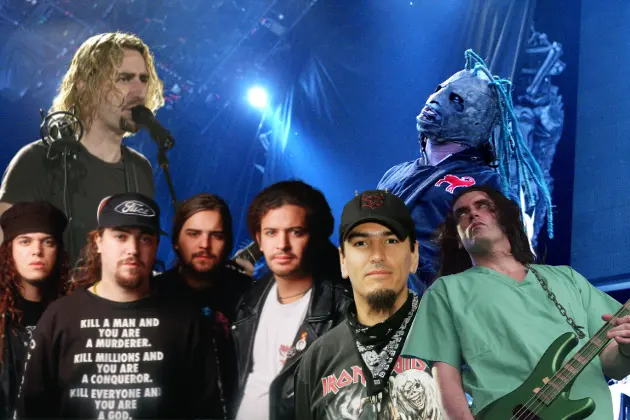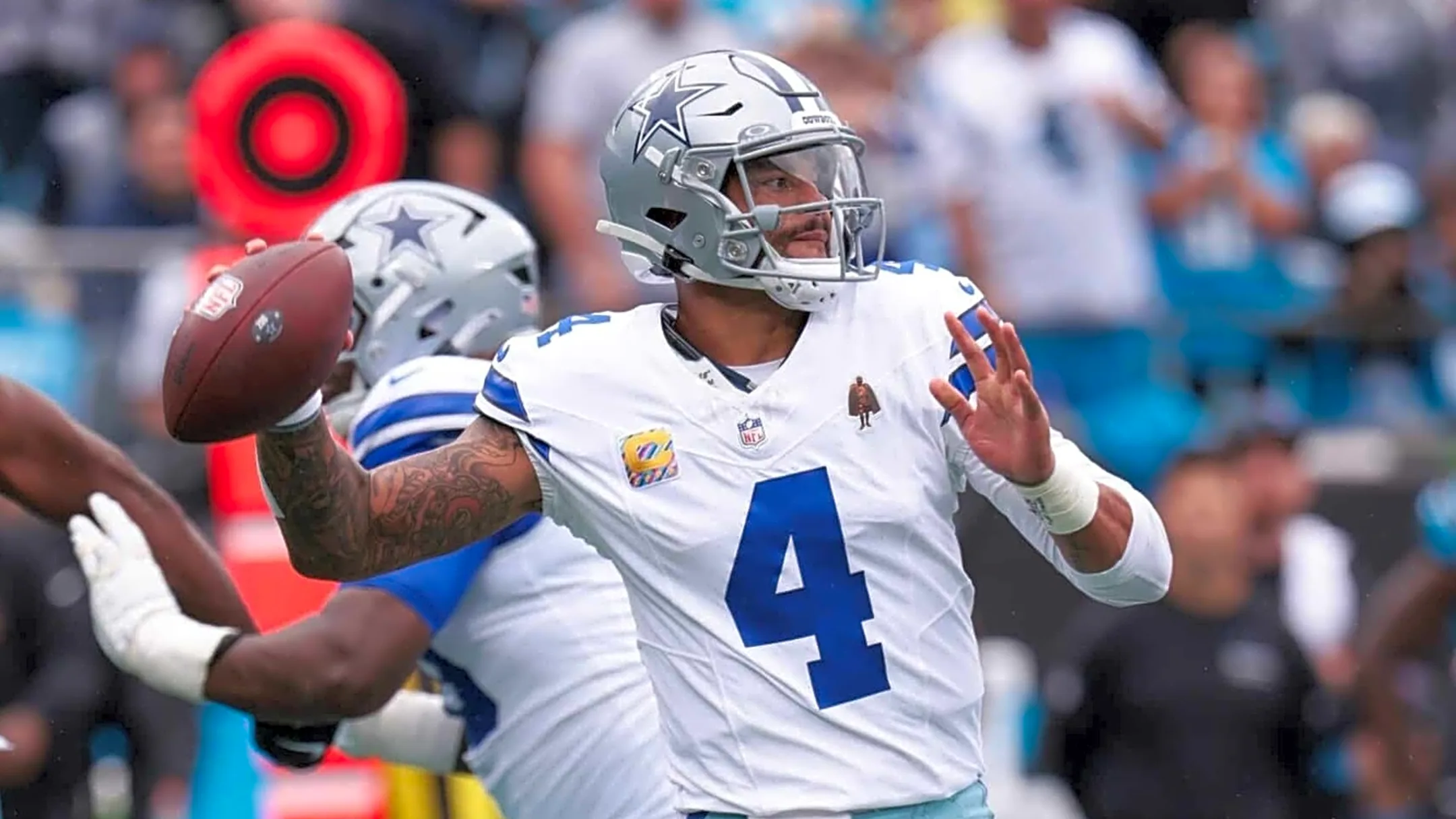Copyright derryjournal

Roadrunner Records turns 45 years old in 2025.The iconic metal label was the home to huge acts including Slipknot, Soulfly, Machine Head, Trivium and Nickelback.But as the success of the bands grew, so did the need of the label to grow too - leading ultimately to an exodus. They were considered to my generation the leading record label when it came to metal in the late ‘90s and early ‘00s; that heyday of baggy jeans, wallet chains, frosted tips and the whole fashion that came along with it. Then it just felt, without warning, that the once mighty Roadrunner Records just seemed to fade away. That couldn’t be the case, could it? The record label that helped bring to the attention of the world the likes of Sepultura, Type O Negative, Soulfly, Slipknot and, as much as some people are pained to admit it, Nickelback, seemed like they were on top of the metal world by the turn of the new millennium, with several artists continuing to buck the norm and enter the Billboard and UK Charts. But then, come later in the millennium, all that seemed to vanish. It turns out that the Roadrunner Records story is a tale of larger, corporate entities becoming involved and the typical situation many record labels can find themselves in when their cast of incredibly successful musicians becomes a little too big to look after anymore. But for a glorious number of years, which I am more than happy to admit I am biased towards (in my rose-tinted wraparounds), Roadrunner Records ruled the metal waves. So how did we get from mainstream acceptance to the eventual closure of its international offices and its integration into a global conglomerate? This is a timeline of the rise, the fall, and the continued efforts of a label revered by fans, if not at times repulsing some of its artists on its roster. The early years and Roadracer Records (1980 - 1989) Roadrunner Records first began life in 1980, formed in the Netherlands by Cees Wessels as a means to import the burgeoning number of North American metal recordings into Europe. Though the label was focused on metal, some of its very early releases were surprisingly diverse albums licensed for distribution; the very first release was an album by folk/pop artist Jim Croce, while the also released works by jazz-rocker Robert Wyatt and hardcore punk pioneers Black Flag. Perhaps its biggest successes emanated from the Bay Area Thrash scene, as Roadrunner was one of the first labels in Europe to distribute early releases from the metal icons Metallica in the Scandinavian region. Such was the success of the metal imports that Roadrunner would open its US headquarters in New York City by 1986, with the late 1980s seeing additional offices opening in the UK, Germany, France, Japan, Australia, Denmark, Russia and Canada. The label’s opening in the US proved a problem initially due to their name sharing that of a famous cartoon character of the same name, so the imprint over there became Roadracer Records. However, come the 1990s, they would consolidate back to their single Roadrunner Records brand worldwide. The late ‘80s saw early successes for the label, both commercially and critically. King Diamond would become the first Roadrunner artist to chart on the Billboard Top 200 (for his 1987 album, Abigail), while Annihilator would also earn commercial recognition in both Europe and Japan. Critically, Roadrunner also handled the releases of two watershed moments in the metal scene; in 1989, they released Obituary’s Slowly We Rot, a landmark album in the development of the Death Metal genre and a cornerstone of the influential Florida Death Metal scene. That same year, Sepultura would release their bona fide thrash metal classic, Beneath The Remains, marking their international breakthrough and catapulting the group from “third world obscurity” to major contenders in the extreme metal genre. Mainstream acceptance (1990 - 1998) Metal and rock music were becoming more accepted by mainstream audiences in the early ‘90s, with the likes of Metallica and, although not strictly metal, Nirvana proving that there was a huge audience for alternative music - and with it, chart success. This would be the case for Roadrunner, which in the early parts of the decade saw the releases of two high-profile albums that would become cornerstones of the label’s roster for years to come. In 1993, both Sepultura’s genre-redefining work Chaos A.D and Type O Negative’s gloomy, industrialised work Bloody Kisses were released. Both helped cement Roadrunner Records from being simply a distributor who licensed works for release into a major record label in the industry. Chaos A.D would become Roadrunner’s first release to crack the Billboard Top 40 albums chart, peaking at number 32, while closer to home, the album peaked at number 11 on the UK Official Albums Chart. Type O Negative would go one better, though - Bloody Kisses would be certified gold by the RIAA in 1995, becoming the first band from the label to earn such an achievement. Propelled by the popularity of songs such as ‘Christian Woman’ and ‘Black No. 1 (Little Miss Scare-All), the band would receive significant radio play, leading not only to more recognition from the industry itself, but leading to countless bands wishing to join the label. You can count acts such as Machine Head, Life of Agony, Cynic, and Suffocation as some of the big acts that would release through Roadrunner, showcasing their diversification beyond thrash and death metal. This era of commercial growth also included the creation of Max Cavalera's post-Sepultura project, Soulfly, which released its self-titled debut in 1998, acting as the perfect bridge leading to the explosion of nu-metal in the years ahead. The Nu-Metal explosion... and Nickelback (1998 - 2004) Some schools of pop culture anthropology might cite 1996 as the moment nu-metal exploded into the mainstream consciousness (and our eardrums), but I find myself looking at 1998 as the moment the subgenre exploded into the zeitgeist many of us still know and love today. Korn would release their mainstream blockbuster, Follow The Leader, in August of that year, while System of a Down and Godsmack would release their self-titled debuts too. This critical year also saw the release of Max Cavalera’s first Soulfly album (1998), which was a huge initial release for Roadrunner Records in the burgeoning genre. The album immediately demonstrated Max’s wide influence, featuring guests like Fred Durst, Chino Moreno, and Benji Webbe (of Dub War/Skindred fame), validating his reputation and paving the way for the label’s greatest commercial boom to date. Some of metal’s most hallowed releases would emerge in this time frame; Fear Factory released both Demanufacture (1995) and Obsolete (1998) during this time frame, both considered landmark moments for industrial metal. Obsolete became their commercial breakthrough, in part thanks to their chart-breaking single 'Descent' and their widely successful cover of Gary Numan’s ‘Cars’. It would remain Fear Factory’s highest-selling album, but things were not all roses—or tulips on this occasion—between the artists and the label, with Fear Factory’s Burton C. Bell famously called founder Wessels a 'Dutch devil' due to complaints about the contracts offered—a problem that would foreshadow the downturn of the label. But come the new millennium, those older artists would need to contend with the juggernauts that Roadrunner Records would pin all their hopes on - one of which was a favourite of metal fans almost everywhere, while the other was a Canadian band with a bad reputation, yet an incredible run of commercial success. Slipknot would join Roadrunner Records in 1999 and then go on to release their celebrated self-titled debut; by 2000, Slipknot became the first Roadrunner band to go Platinum (selling over one million copies in the US). This masked collective from Iowa was so successful that many within the label and the industry saw them as the band that saved Roadrunner Records. Simultaneously, the label signed the Canadian post-grunge act, Nickelback. Although signed to a different label in their native Canada, their global deal with Roadrunner led to unprecedented radio and MTV domination. Their 2001 album, Silver Side Up and ‘that’ single that hit number 4 in the UK, propelled the band to genuine worldwide superstar status, providing Roadrunner with the kind of massive, sustained mainstream radio rock success that even Slipknot’s extremity could not match. Though the boom period came at a time, Roadrunner were facing financial trouble; a distribution deal with RED Distribution through Edel Music was aborted, leading to Wessels putting up 49% of the label’s stock for sale in 2001. The Island Def Jam Music Group would purchase a 50% stake in Roadrunner in July 2001 for a reported $33 million, which allowed the label to switch distribution immediately to Universal Music and Video Distribution. Some fans were also not happy with what “became” of their beloved acts; Machine Head would ‘cop’ a lot of flack with the release of their album The Burning Red in 1999, which was produced by the architect of Korn’s sound, Ross Robinson, and saw the band go more in a nu-metal direction than their previous thrash metal sound. They were accused of selling out, while Rob Flynn at the time defended the change in sound, in particular his vocals, remarking that the band were influenced by the likes of the Wu-Tang Clan, so their vocals had “always” had some semblance of rap to them. It would be the case, with conversations emerging in later years, that Roadrunner Records had a formula now that worked, and even if you were a thrash or industrial metal band, you were almost expected to embrace ‘nu-metal’ - again, a sentiment Burton C Bell would ridicule in later interviews. Roadrunner United, second purchase, and the beginning of the end (2005–2010) The high-octane commercialism of the Nu-Metal era provided Roadrunner with enormous cash flow, but it also masked deep financial issues that would eventually cost the label its independence. As the label struggled to regain its financial footing after selling half its stock in 2001, it paused to celebrate two and a half decades of influence. In 2005, Wessels ordered a major project to commemorate the label's 25th Anniversary. Dubbed Roadrunner United, the effort produced the collaborative album The All-Star Sessions. This immense undertaking involved 57 artists from 45 past and present Roadrunner bands, creating a massive community project. Spearheaded by ‘Team Captains’ like Joey Jordison (Slipknot) and Robb Flynn (Machine Head), the album was a powerful statement of the label’s creative legacy, uniting generations of metal titans from King Diamond to Trivium. The project served as a spectacular artistic high point just before the label's corporate identity dissolved entirely. The success and profitability established by Slipknot and Nickelback made Roadrunner an extremely attractive target for major music conglomerates; the process of corporate ownership began on December 18 2006, when Warner Music Group (WMG) signed an agreement to purchase a majority stake (73.5%) in the label, a deal that was finalised in January 2007. This marked the definitive end of Roadrunner's independent status, and while WMG initially allowed the label to operate as a seemingly ‘freestanding label’ with founder Cees Wessels remaining as CEO, the long-term prognosis was grim. The final (ten-tonne?) hammer fell in 2010 when WMG completed its acquisition, purchasing the remaining stock and assuming 100% ownership of Roadrunner Records. The atmosphere of impending disaster was palpable among the staff; the full takeover was internally nicknamed "The Red Wedding," referencing the infamous betrayal scene in Game of Thrones, reflecting the deep cynicism regarding the corporation's future intentions. Despite this corporate consolidation, the label's industry standing remained strong for a period, as Roadrunner Records was voted Best Metal Label by Metal Hammer at their Golden Gods Awards for four consecutive years between 2005 and 2008. Nevertheless, the label’s destiny was now entirely controlled by WMG, paving the way for the major cutbacks and changes of the following decade. Winding down and the ‘Imprint Era’ (2012–Present) The "Red Wedding" became a reality on April 26, 2012, when WMG announced brutal and extensive worldwide cutbacks; this immediately dismantled the label’s independent infrastructure: the UK, Canadian, and Netherlands offices were closed entirely, and founder Cees Wessels stepped down as CEO. With the closure of the international offices and the departure of key A&R personnel, the era of deep artist loyalty ended. These cutbacks exposed the long-running issues with artist agreements that had powered the label's boom. Roadrunner was notorious for binding artists to long-term deals, leading to tension first highlighted years earlier by Fear Factory's Burton C. Bell, who called the contracts "bullsh*t." Nickelback quietly exited by 2014, while core metal acts like Machine Head, Opeth, and Soulfly departed for independent rivals like Nuclear Blast. The most significant exit came when Slipknot fulfilled their monumental contract with the release of The End, So Far in 2022, choosing to pursue their future independently. Slipknot’s departure was not a surprise; frontman Corey Taylor had openly stated that Roadrunner was "not even a shadow of what it used to be" because nearly every person they had started working with over two decades earlier had been fired in a "very unceremonious way" following the WMG acquisitions, and criticized the deals for funnelling streaming revenue to the label instead of the artists. Following this, in June 2022, the label was merged again into the new Warner umbrella group, 300 Elektra Entertainment (3EE). Today, Roadrunner Records is not an operational independent entity, and while the UK office was permanently dissolved in 2013, the imprint lives on. It continues to sign new acts like UK hardcore band Guilt Trip and release music by core artists such as Trivium and Gojira, ensuring the brand remains synonymous with heavy music, even if the creative control rests entirely with a New York corporate team. What are your fondest memories of Roadrunner Records as a metal fan, and would you like to see the history of another record label from the metal world? Drop the writer of this article an email with your thoughts or suggestions on who you want to see us cover next.



